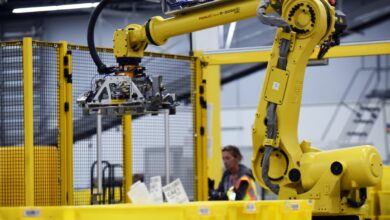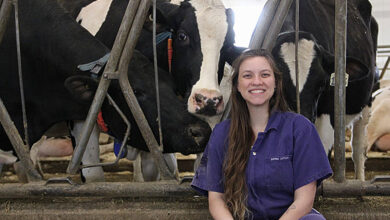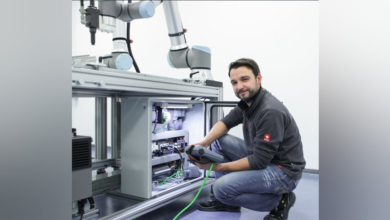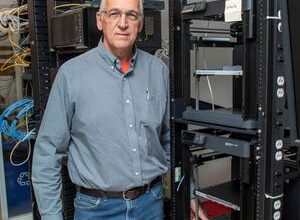Consumer Robotics Market to Reach US$27 Billion by 2028
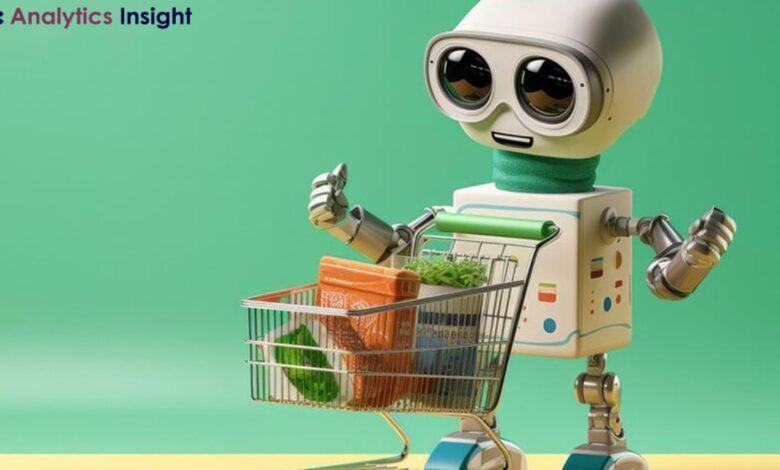
Consumer Robotics Market Prediction: The Consumer Robotics market size is expected to reach US$27.89 billion by 2028 from US$8.55 billion in 2023, with a CAGR of 26.67%. Tech developments in artificial intelligence, machine learning, and automation through complex algorithms are exponentially increasing the functionality and availability of consumer robots.
The realm of consumer robotics has a lot of room for growing with examples ranging from home assistants and entertainment robots to high-level security systems and health trackers poised to make specialized robotics a mainstay of the everyday world riddle. In this article, we delve into the latest advances in consumer robotics and provide our projections for the future state of the consumer robotics market, the trends at work behind the figures, and how this will affect different industries.
Factors driving the Consumer Robotics market growth
Changing lifestyle of many people living in developed regions in conjunction with the increase in purchasing power of the people are two of the largest factors, which have led to large demand for products sold by retail chains. Burden of excessive cost of consumer robots has caused market players in developing economies to make more affordable consumer robotics ensuring greater availability and affordability and supporting consumer robotics market by investment in products that improve the standard of living.
With the advancements of technology, manufacturers continue to push the boundaries of what robotic devices can do for average consumers, creating a broader granularity of devices and even more options. A spokesperson said the enhancements to artificial intelligence, navigation systems and wearable computing devices are driving more sophisticated robots, which expand the range of tasks they can do for consumer renters.
As the trend to smart homes gains popularity and consumers demand more automation in their daily lives, they are turning to consumer robots to perform tasks more efficiently and to bring more convenience. This has spurred the growth of the market, owing to increasing popularity of robotic technology such as autonomous and semi-autonomous robots, especially in household and entertainment applications.
Additionally, as robots experience price erosion of 15-20% on average, driven by technology innovations that help lower both production and labor costs, more segments of the population are able to purchase more sophisticated robots. Additionally, robots seem to offer an emotional attachment to humans and assistance to caregiving tasks, which are becoming more and more interesting among elderly people and people with some kind of disability.
Market restraints that may hinder the growth
Consumers find it difficult to incorporate robotic products in their day to day life as robotic products are expensive, making it a major factor for considering robotic products. Consumer robotics are still in the early stages, and manufacturing cost of robotic technology is a significant challenge.
The reluctance to replace human labor by robots exists, especially in traditional and labor-intensive industries. This hesitancy primarily comes from concerns of job loss and employment. A lot of sectors — like agriculture, construction, hospitality, and more — rely heavily on manual labor and human judgment, and the notion of replacing that with robots is a frightening one, to both workers and employers.
Many people find humanoid robots, or robots in general, to be creepy or eerie. This phenomenon, known as the “uncanny valley” theory, describes the sense of unease or creepiness people feel when robots resemble, but don’t look exactly, like humans. Acceptance and trust may therefore be lacking, which will hinder the deployment of robots.
Consumer robots with AIs always raise safety concerns. Failure to comply with these issues or human error can lead to failure and, accordingly, accidents, and accidents mean trauma or damage to property. Safety considerations are further intensified when the robot is working close to a human, like in homes or general environment.
As innovation in this sector requires substantial funding, this would be a limiting factor for market expansion. And, furthermore, plenty of people out there are still uneasy about robots in the home and have no intention of having robots running around their houses and communicating with them on a human level.
Recent Developments in the Consumer Robotics Market
To strengthen its consumer robotics team, Amazon has created a Consumer Robotics Software Development Center in Bengaluru. The move comes after Amazon launched its first consumer robot Astro, which uses AI, computer vision, sensor technology, and edge computing to help monitor and talk through homes. This vision attracts talent that will make India a leading innovation hub in the world and significantly enriches the consumer robotics experience worldwide.
Yaskawa Electric Corporation introduced the MOTOMAN NEXT series, a new generation of industrial robots with a payload capacity from 4 to 35 kg. Their industry-leading autonomous adaptivity regards environmental judgments and optimizes task performance. Due to its in-house developed motors, the series boasts advanced motion planning and recognition processes for superior performance.
Vention has introduced new AI-powered features to its Manufacturing Automation Platform (MAP) that grants over 4,000 manufacturers the ability to design, automate, deploy, and operate custom factory equipment in the cloud. MachineBuilder version 1.3 also features intuitive 3D design tools, AI-driven part placement and real-time design updates.
Further to this, Vention has launched MachineLogic, which allows robot programming without code and one-click redeployment from a digital twin to a physical machine. These advancements accelerate the automation process and improve the user experience while facilitating quick deployment, further solidifying Vention’s position in the industrial automation field.
Notable Partnerships in the Consumer Robotics Market
In the new initiative, LG Business Solutions USA is teaming up with SVT Robotics to combine the latter’s technology with CLOi CarryBot autonomous mobile robots (AMRs) for DC deployments across the U.S. These robots, driven by the SOFTBOT® Platform from SVT Robotics, can integrate with proven warehouse management systems without the need for custom coding.
Simplified deployment, less IT burden, and better warehouse efficiency and productivity are enabled by this integration. The CLOi CarryBots enhance operations and reduce total cost of ownership with fast movement, high battery capacity and a flexible configuration to fit different warehouse environments and will make their MODEX debut in 2024.
Moreover, OMRON and ROEQ have announced a partnership to export OMRON’s autonomous mobile robot (AMR) technology with new ROEQ solutions for material handling applications to the United States. By combining these robots remotely with ROEQ’s TML500/TML750 lifters and TR600/TR700 rollers, it is possible to automate loading and unloading of heavy goods transfer and perform well in logistics cycles. Rollers allow for the smooth transfer of freight between conveyor stations, and the lifter modules can handle pallets up to 760 kg.
Conclusion
With each passing day the consumer robotics market evolves and it seems that many aspects of daily life and industry operations may never be the same again. This has led to increasingly capable and useful consumer robots, thanks to more powerful and intelligent AI, better connectivity, and smarter design, which are making robots useful across many different aspects of our daily lives.
The leading market players include Amazon, Yaskawa, OMRON, LG, and Vention, all offering innovative products and solutions that are fast pushing the market ahead. The future of consumer robotics market holds incredible promise for greater productivity and efficiency and convenience for users. Given that all these technologies are still in their infancy, they will, in all likelihood, change our ways of interacting with the environment we live in and make the concept of a robot-powered lifestyle become a reality.
FAQs
What are the most likely consumer market segments for robots?
The most likely consumer market segments for robots are individuals in their middle and later years of life, particularly focusing on disabled/elderly people and disaster area assistance.
These segments can benefit from robots assisting with daily chores, providing companionship, and accessing hazardous areas, catering to specific needs and enhancing quality of life.
What is the trend in robotics in 2024?
The trend in robotics for 2024 includes the growing use of artificial intelligence (AI) and machine learning, which is enhancing the capabilities of robots in various applications, such as predictive maintenance and autonomous decision-making.
Additionally, cobots are expanding to new applications, and mobile manipulators are being developed to automate materials handling tasks, further increasing the efficiency and productivity of industrial robotics.
Is robotics in high demand?
Yes, robotics is in high demand, with the consumer robotics market projected to rise. The demand for robotics engineers is also expected to increase, with the U.S. alone needing 11,000 engineers in the field over the next 10 years.
What are consumer products of robotics?
Consumer products of robotics include a wide range of devices designed for personal or domestic use, such as vacuum cleaners, floor cleaners, window cleaners, lawn mowers, pool cleaners, and snow removal robots.
These robots can perform various tasks, from basic household chores to more complex activities like social interactions and entertainment, and are often integrated with AI and other advanced technologies.
What are the top 5 industries for robotics use?
The top 5 industries utilizing robotics include healthcare, agriculture, food preparation, manufacturing, and military, with each sector leveraging robots to boost efficiency and convenience.
These industries are adopting robotics to enhance productivity, reduce costs, and improve quality of life, with applications ranging from surgery and therapy to farming and manufacturing.
Disclaimer: Analytics Insight does not provide financial advice or guidance. Also note that the cryptocurrencies mentioned/listed on the website could potentially be scams, i.e. designed to induce you to invest financial resources that may be lost forever and not be recoverable once investments are made. You are responsible for conducting your own research (DYOR) before making any investments. Read more here.
